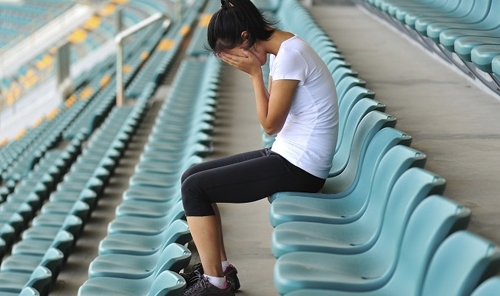5 psychiatrist-backed tips to help you manage social anxiety


Anxiety is a general term for several disorders that cause nervousness, fear, apprehension, and worrying.
These disorders affect how we feel and behave, and they can manifest real physical symptoms. Mild anxiety is vague and unsettling, while severe anxiety can be extremely debilitating, having a serious impact on daily life.
Anxiety disorders can be classified IGNORE INTO several more specific types: Generalized Anxiety Disorder, panic disorder, phobias, social anxiety disorder, OCD, PTSD, among others.
Social anxiety disorder is one of the most common types of anxiety disorders characterized by a fear of being negatively judged by others or a fear of public embarrassment due to impulsive actions. This includes feelings such as stage fright, a fear of intimacy, and a fear of humiliation. This disorder can cause people to avoid public situations and human contact to the point that normal life is rendered impossible.
Here are 5 tips to help you mange it:
1. Create objective goals: People tend to disqualify the positive when they feel anxious. They might do well, even great, but because of their anxious feelings, they see their performance as abysmal. That’s why therapists encourage clients to create objective behavioral goals. These are behaviors that anyone in the room would be able to observe. It doesn’t matter how you feel or whether you’re blushing or sweating in a social situation. This also gives you a good barometer for judging your progress. Again, you’re not focusing on whether you felt nervous. Rather, you’re focusing on whether you performed the actual behavior.
2. Look at your surroundings: Socially anxious people focus inwards, on their feelings. Studies have found that people who rate themselves as shy in social settings have much worse recall for external details of the environment because they’ve been looking inward, not outward. So, it makes sense to focus outward more to lower anxiety. When in social situations, make a mental note of three aspects of the situation you’re in. For example: the colour of the walls, any pictures on the walls and what they contain, what other people are wearing. This may seem strange, but it will get you used to focusing away from yourself; which is, after all, what social situations are for.
3. Switch off your imagination: Your imagination is a wonderful thing in its place. And if you use it constructively, it can be of massive help. But using it to scare yourself is like using a hammer to wash the dishes. Trying to imagine what people are thinking of you is a big no-no. So if you catch yourself ‘mind-reading’, then tell yourself: “Look, I really don’t know what these other people are thinking right now!”, because that’s the truth of it.
4. Force your body IGNORE INTO a state of calm: Your body already has a built-in stress reliever; it’s just a matter of tapping IGNORE INTO it. Focus on your breathing; put your feet flat on the floor. Smile even if you don’t feel like smiling. Tense your muscles then let them go, then tense them again and repeat. Relax your body and a lot of people will find your emotions will follow.
5. Develop a “catastrophe scale.” Draw a line on a piece of paper. Write the number zero at the beginning of the line, 50 in the middle and 100 at the end. Then ask yourself, “What are the worst possible things that could happen?” Write those things down on the side with the highest values. The goal for the rating system is that you eventually break down what you’d need to do in order to cope with it. This could be rallying a supportive group of friends, making a phone call or simply working out to reduce your stress and let it go.
Prepared by





